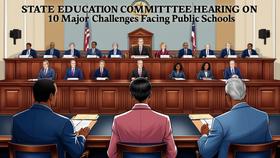For the 2025-26 school year, there are 5 public preschools serving 1,548 students in Columbus Municipal School District. This district's average pre testing ranking is 2/10, which is in the bottom 50% of public pre schools in Mississippi.
Public Preschools in Columbus Municipal School District have an average math proficiency score of 32% (versus the Mississippi public pre school average of 51%), and reading proficiency score of 25% (versus the 43% statewide average).
Minority enrollment is 96% of the student body (majority Black), which is more than the Mississippi public preschool average of 55% (majority Black).
Overview
This School District
This State (MS)
# Schools
9 Schools
281 Schools
# Students
3,065 Students
125,600 Students
# Teachers
230 Teachers
10,003 Teachers
Student-Teacher Ratio
14:1
14:1
Student By Grade
District Rank
Columbus Municipal School District, which is ranked within the bottom 50% of all 147 school districts in Mississippi (based off of combined math and reading proficiency testing data) for the 2022-2023 school year.
The school district's graduation rate of 81% has increased from 80% over five school years.
Overall District Rank
#131 out of 148 school districts
(Bottom 50%)
(Bottom 50%)
Math Test Scores (% Proficient)
25%
52%
Reading/Language Arts Test Scores (% Proficient)
22%
42%
Science Test Scores (% Proficient)
36%
55%
Graduation Rate
81%
89%
Students by Ethnicity:
Diversity Score
0.14
0.60
% American Indian
n/a
n/a
% Asian
n/a
1%
% Hispanic
2%
4%
% Black
93%
45%
% White
3%
45%
% Hawaiian
n/a
n/a
% Two or more races
2%
5%
All Ethnic Groups
District Revenue and Spending
The revenue/student of $13,833 is higher than the state median of $12,205. The school district revenue/student has grown by 7% over four school years.
The school district's spending/student of $13,281 is higher than the state median of $12,074. The school district spending/student has grown by 7% over four school years.
Total Revenue
$42 MM
$5,371 MM
Spending
$41 MM
$5,314 MM
Revenue / Student
$13,833
$12,205
Spending / Student
$13,281
$12,074
Best Columbus Municipal School District Public Preschools (2025-26)
School
(Math and Reading Proficiency)
(Math and Reading Proficiency)
Location
Quick Facts
Rank: #1 - 31. - 3.
Cook Elementary School
(Math: 35-39% | Reading: 25-29%)
Rank:
Rank:
3/
Bottom 50%10
2217 N Seventh Street
Columbus, MS 39705
(662) 241-7180
Columbus, MS 39705
(662) 241-7180
Gr: PK-5 | 423 students Student-teacher ratio: 14:1 Minority enrollment: 95%
Rank: #1 - 31. - 3.
Franklin Academy
(Math: 35-39% | Reading: 25-29%)
Rank:
Rank:
3/
Bottom 50%10
501 N Third Avenue
Columbus, MS 39701
(662) 241-7150
Columbus, MS 39701
(662) 241-7150
Gr: PK-5 | 268 students Student-teacher ratio: 13:1 Minority enrollment: 93%
Rank: #1 - 31. - 3.
Sale Elementary School
(Math: 35-39% | Reading: 25-29%)
Rank:
Rank:
3/
Bottom 50%10
520 Warpath Road
Columbus, MS 39702
(662) 241-7260
Columbus, MS 39702
(662) 241-7260
Gr: PK-5 | 275 students Student-teacher ratio: 14:1 Minority enrollment: 97%
Rank: #44.
Stokes Beard Elementary School
(Math: 25-29% | Reading: 20-24%)
Rank:
Rank:
2/
Bottom 50%10
311 Martin Luther King Dr.
Columbus, MS 39701
(662) 241-7270
Columbus, MS 39701
(662) 241-7270
Gr: PK-5 | 353 students Student-teacher ratio: 13:1 Minority enrollment: 98%
Rank: #55.
Fairview Elementary School
(Math: 20-24% | Reading: 20-24%)
Rank:
Rank:
2/
Bottom 50%10
225 Airline Road
Columbus, MS 39702
(662) 241-7140
Columbus, MS 39702
(662) 241-7140
Gr: PK-5 | 229 students Student-teacher ratio: 14:1 Minority enrollment: 97%
Recent Articles

Texas Schools Enrollment Trends & Policy in 2025
Latest data and policy changes on Texas public school enrollment growth, funding, and virtual education in 2025.

Financial Aid & Hidden Costs in Public Schools
Learn about financial aid and hidden costs in public schools. Discover what parents should budget for beyond tuition-free education.

NYC Schools Still Most Segregated in 2025
Despite reforms, New York City schools remain the most segregated in the U.S. in 2025. Here鈥檚 what parents and educators need to know.





